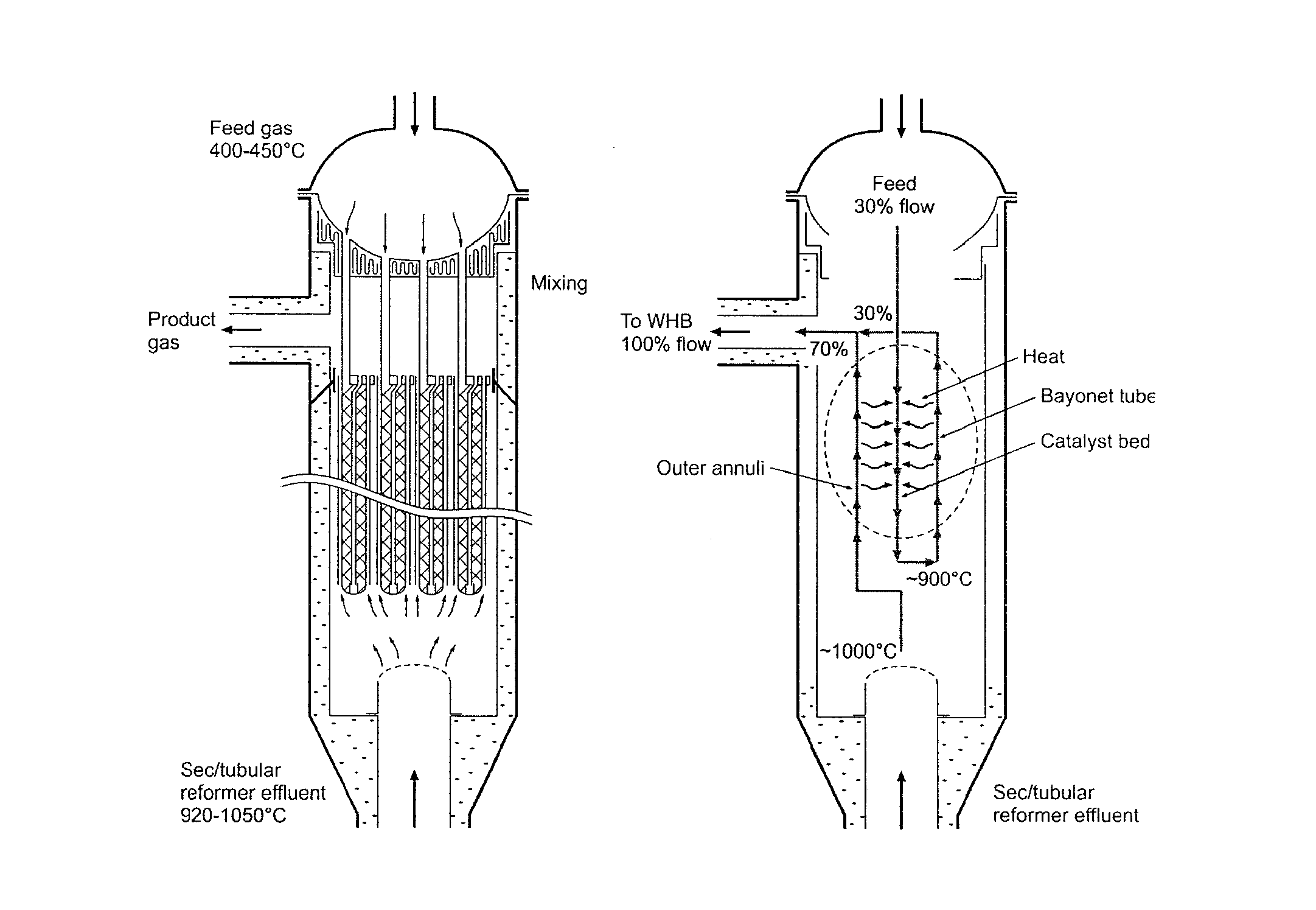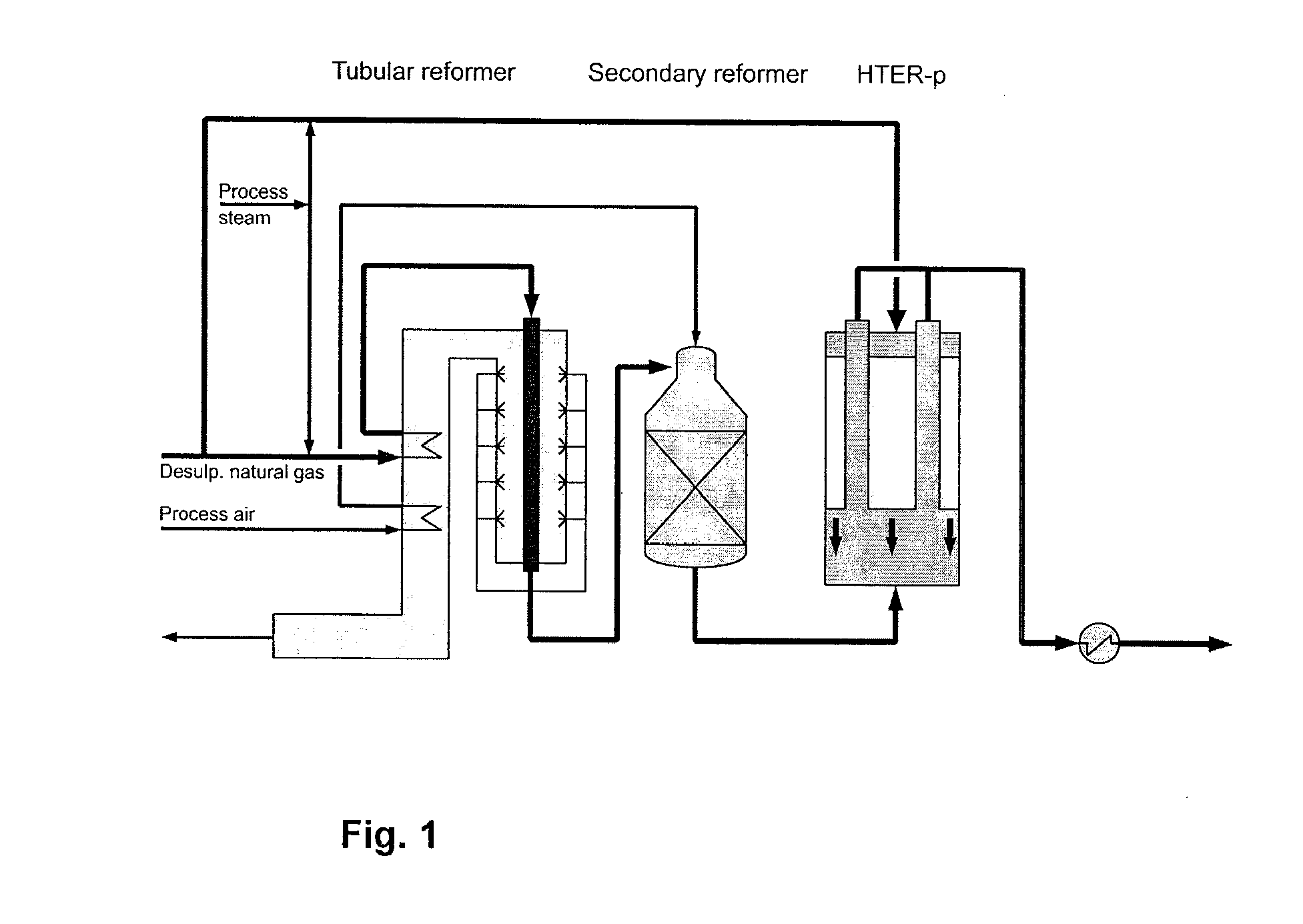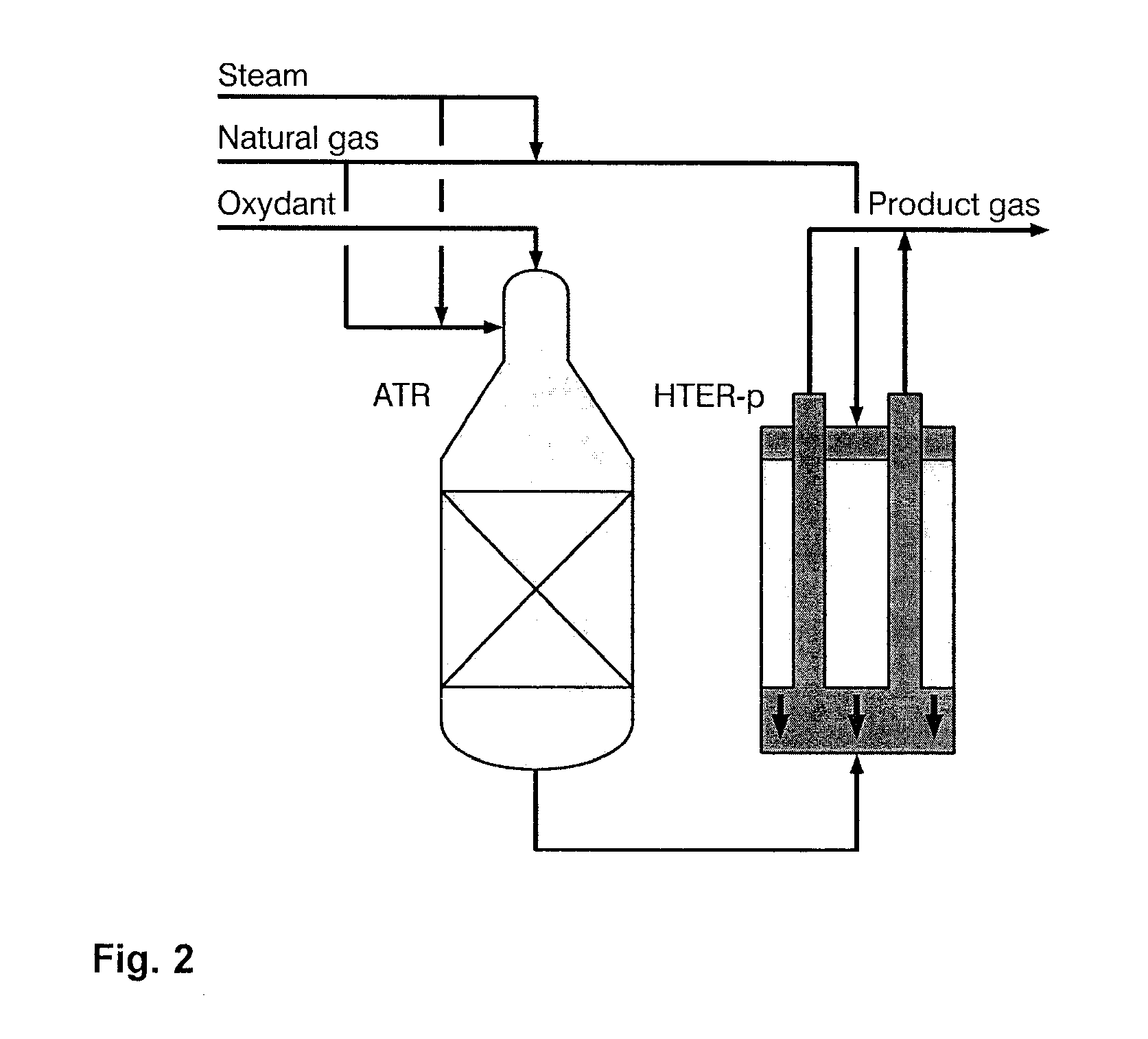Feed ratio control for hter
a technology of feed ratio and hter, which is applied in the direction of chemical/physical/physical-chemical processes, chemical apparatus and processes, organic chemistry, etc., can solve the problems of failure due to metal dusting, corrosion by metal dusting, and significant reduction of the affinity of hot metal surfaces with metal dusting
- Summary
- Abstract
- Description
- Claims
- Application Information
AI Technical Summary
Benefits of technology
Problems solved by technology
Method used
Image
Examples
Embodiment Construction
[0065]By the present invention, a method is disclosed in which a metal resistant to metal dusting is used at a distance from the inlet of the heat exchange reformer, and in which such distance is calculated from the steam to carbon ratio, effluent outlet temperature and hydrocarbon flow of the main reformer, as well as the steam to carbon ratio and hydrocarbon flow rate of the heat exchange reformer.
[0066]The present invention relates to a Heat Exchange Reformer (HER) arranged to be part of a synthesis gas production unit, said synthesis gas production unit comprising a Main Reforming Unit (MRU) and said Heat Exchange Reformer (HER). In operation, the effluent from the MRU is arranged so as to provide heat to the HER, and wherein a hydrocarbon feedstock is arranged so as to pass in parallel through both the MRU and the HER. The invention thus provides:[0067]a. an MRU hydrocarbon feed having an MRU steam-to-carbon ratio (MRUS / C), an effluent outlet temperature (TMRU) and a MRU hydroc...
PUM
| Property | Measurement | Unit |
|---|---|---|
| temperature | aaaaa | aaaaa |
| temperature | aaaaa | aaaaa |
| temperature | aaaaa | aaaaa |
Abstract
Description
Claims
Application Information
 Login to View More
Login to View More - R&D
- Intellectual Property
- Life Sciences
- Materials
- Tech Scout
- Unparalleled Data Quality
- Higher Quality Content
- 60% Fewer Hallucinations
Browse by: Latest US Patents, China's latest patents, Technical Efficacy Thesaurus, Application Domain, Technology Topic, Popular Technical Reports.
© 2025 PatSnap. All rights reserved.Legal|Privacy policy|Modern Slavery Act Transparency Statement|Sitemap|About US| Contact US: help@patsnap.com



